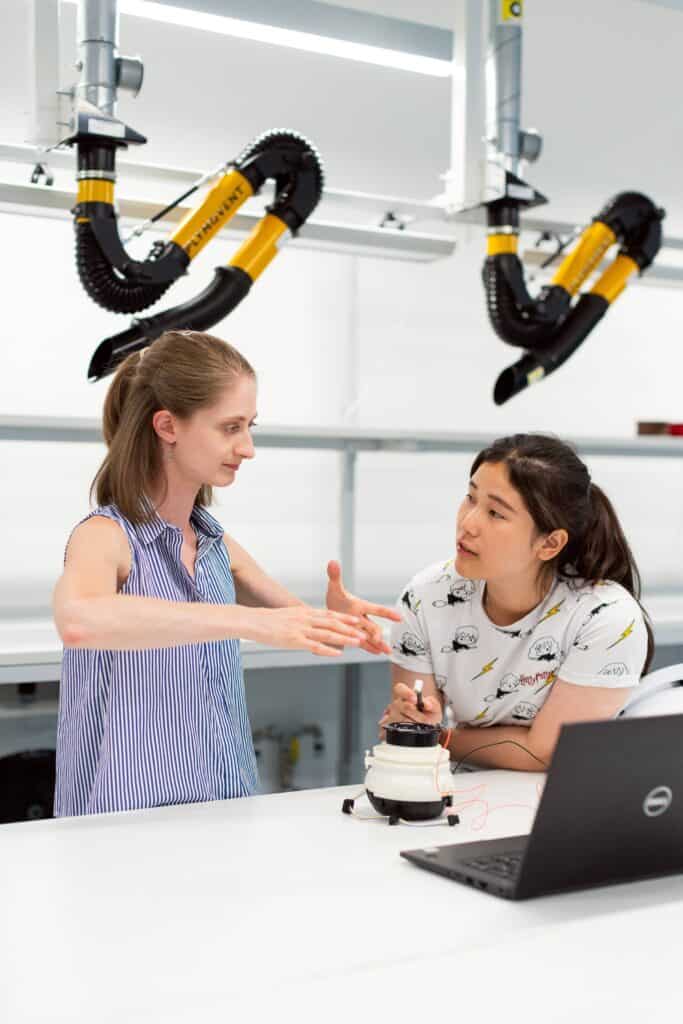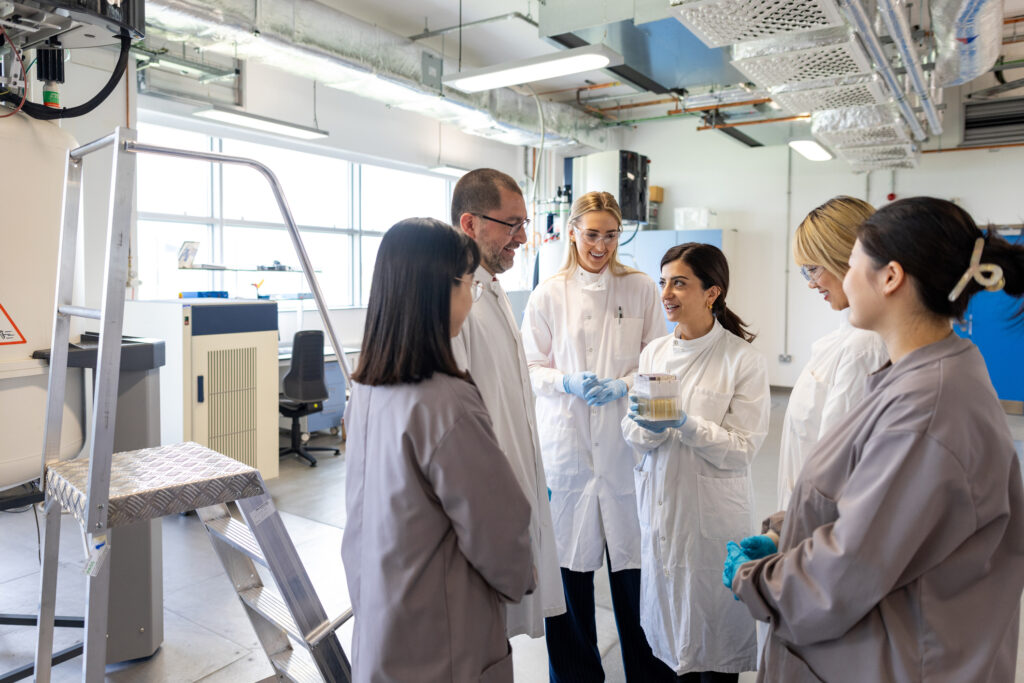School exam results analysis 2025
14 Aug 2025
Florence Young
Public Opinion and Policy Officer
STEM subject entries overall
As has consistently been the case in recent years, Science, Technology, Engineering, and Maths (STEM) subjects remain popular choices among pupils in the UK. At A-level, some 46% of all exams sat this year were in STEM subjects, for GCSEs 44% were in STEM subjects, for the Scottish Highers this is at around 29%, and for Scottish Advanced Highers the proportion of STEM subjects is at 44%.
A-Level entries overall
For A-levels, almost all trends in STEM subjects are consistent with last year, with a slight change in trajectory for computing being the only exception. As with previous years, five of the top ten most popular subjects include maths (12.7% of exam entries), psychology (8.6%), biology (8.1%), chemistry (7.2%) and physics (5.1%), with maths remaining the most popular A-level overall.
The STEM A-levels that saw the biggest increase in uptake compared to 2024 were further mathematics (up by 7.2% relative to last year’s entries), mathematics (4.4%), and physics (4.3%). The increases in all these subjects reinforce a recent shift in trajectory, from 2023-2024, which reversed the gradual decline in these entries since around 2020/2021. A number of STEM subjects saw a continued decline in uptake this year, with the biggest drop in entries seen for biology (reduced by 4.0% compared to 2024), followed by psychology (3.3% reduction), and computing (2.8% reduction).
Scottish Highers entries overall
For the Scottish Highers, three of the most popular subjects are chemistry, mathematics and physics, with maths remaining the most popular STEM subject (9.7% of entries, second only to English overall). For Scottish Advanced Highers, four of the five most popular subjects are STEM-related (mathematics, biology, chemistry, physics), with maths remaining the most popular subject overall (15.6% of entries). In general, the trends in STEM subject uptake across both Scottish higher exam levels are consistent with recent years.
GCSE entries overall
At GCSE, almost 44% of all exams sat are in STEM subjects. Four of the top ten most popular GCSEs include Science: Double Award, Maths, Biology and Chemistry. Entries for both the core curriculum (maths, physics, biology and chemistry) and non-core curriculum (which includes subjects like computing, social sciences and design and technology) have stayed level compared to 2024, with 39.4% and 4.5% of entries respectively.
Female STEM entries for A-levels
Overall, STEM A-level entries continue to show a fairly even split by gender, breaking into 48.9% female and 51.1% male.
There are still substantial differences in the proportion of genders taking each STEM subject. Psychology (73.9% of entries were female) and biology (64.3%) remain the most popular scientific subjects among girls, with girls also accounting for 56.0% of chemistry students. In contrast, physics and computing continue to have some of the lowest proportions of female students, at 24.1% and 18.6%, respectively. However, we do see an encouraging continuation of the trend toward increasing proportions of girls taking the computing A-level, with female entries up 3.5% on the previous year.
Yet overall, differences in the proportion of girls taking individual STEM subjects have been stubbornly persistent over the last few years. More needs to be done to address the persistent gender divides in the uptake of many STEM A-levels.
Female STEM entries for GCSEs
Girls made up around 47% of total STEM entries, which is the same as 2024. This year saw 49% of female students enrolled in ‘core sciences’, which includes biology, chemistry and physics collectively. This year largely saw a continuation of trends from previous years, with non-core sciences showing large differences in take up between girls and boys.
Overall
Overall, it is positive that we continue to see an increasing number of students taking up many STEM subjects year on year. For the research system to continue to thrive and, in doing so, drive economic growth in the UK, a larger pipeline of young people becoming scientists, researchers and technicians is required to meet future skills needs. Our report, The Skills Opportunity, highlights the importance of attracting more young people to consider a future in science and engineering.

Related resources

CaSE’s look at the UK Government’s plans for Further and Higher Education in England in the post-16 Education and Skills white paper.

Recent work by CaSE shows how supportive voices can talk about immigration for the UK R&D sector in a way that resonates with the public.

In this briefing CaSE has collated insights from 15 research organisations demonstrating the barriers they face in the UK visa system.

Now that Parliament has finished for the summer, here is an ‘end-of-term’ round-up of all recent CaSE analysis of Government’s plans.